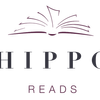By Dr. Dena Cushenberry, Superintendent, Metropolitan School District of Warren Township
It's tempting to believe that money can solve all your problems--especially if you're a school superintendent. I'll never forget the moment my school district won its Race to the Top district grant from the federal government in 2012. 28.6 million dollars! I felt like I had won the lottery. Except that instead of buying a mansion or a yacht, my reward would be ensuring better outcomes for all my students in Warren Township in Indianapolis.
We rushed to start implementing the ambitious plans we outlined in our Race to the Top application, which included 11 different projects embedded within three overarching goals.
- What needs to change in order for our students to be prepared for the future?
- What's the impact on student learning?
- What problem(s) are we trying to solve through technology?
- How will it enhance teacher's capacity to improve student learning in a blended learning environment?
- How will blended learning fit into the district framework of continuous improvement?
Luckily, when it came time to answer these questions, we had some help along the way.
Welcome to Warren Township
Warren Township is an urban school district located on the east side of Indianapolis, and serves over 12,300 students in pre-K through twelfth grade. The district has nine elementary buildings, three intermediate academies, three middle schools, and a 3,700-student high school which includes a career center and an alternative school.
We received the Race to the Top grant because we had a proven history of continuous improvement. Hawthorne Elementary school has been rated "A" for five consecutive years by the State of Indiana. With that said, Indiana has changed its academic standards 3 times in 5 years: Indiana Academic standards, Common Core, and now the new Indiana College and Career Readiness Standards (2014). Currently, we are in the second year of the Indiana College and Career Readiness Standards. Teachers and students are settling in, and appear to feel a sense of stability for what teachers should teach and what students are expected to know and learn.
Dealing with devices
Personalized learning is a teaching methodology that adapts to each student's ability level, learning style, and other unique needs. That kind of flexibility requires technology--lots of it. With our Race to the Top grant money, we purchased 13,000 chromebooks for our classrooms and rushed to distribute them to schools. Simple, right?
But it turned out not to be simple at all. We had a well-thought-out rollout plan with limited regard for the digital content that would be needed to support the personalized learning model we had envisioned. We needed digital content that supported our continuous improvement process for enrichment, remediation, and practice. We had a few digital content options available at the time, and mostly we left it up to teachers to figure out. Because we did value teacher interests and expertise, we had to rethink our continuous improvement process and how we would assess learning with limited digital content.
A tweak to the process
It took us approximately 15 months to get Warren Township's personalized learning back on track, with help from outside consultants at Education Elements. We now have a belief about personalized learning as a district, an implementation plan, and better online and offline assessments that provide real-time data regarding student performance. We are excited about the personalized rollout plan and how it will build teachers' capacity to improve student outcomes and learning.
We also improved on the technology itself. The Chromebooks we use now are steadier and more durable. They can withstand the pressure and weight of books in a book bag, whereas previously we had a lot of screen breakage due to the routine everyday habits of teens.
For the first time in the grant, as superintendent, I believe we have found the sweet spot for what engagement with students should look like for the future. Teachers will now have access to data in real time to adjust instruction by the next minute, hour, day.
If we could start over.... would we? No. The Race to the Top grant has afforded the district the opportunity to take some risks and learn valuable lessons. What we have learned about our district team, teachers, and students is we are resilient when it comes to being a district of continuous improvement. We always found a way to get better even when it's "messy." We seldom use the word "change"--we now call it "iteration." In a blended learning environment, learning is fluid. I hope that will help our district grow and also support other districts as they transition to a personalized learning model through blended learning.
We're living proof that though money alone can't solve a school superintendent's problems, a well-crafted personalized learning program does.
With contribution by Anna Brinley and Jason Burns of Hippo Reads.
